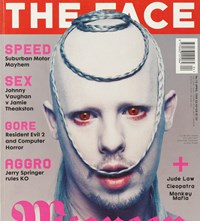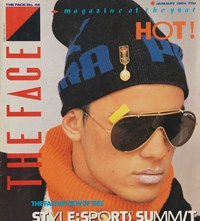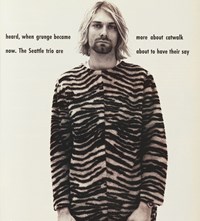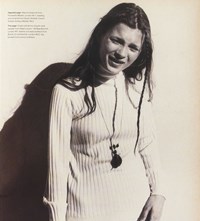To celebrate the release of a new book about the magazine, 12 big names in fashion (including some former contributors to the publication) pen personal odes to the original style bible
- TextTed Stansfield
The impact of The Face (1980-2004) is almost incalculable. Helmed by Nick Logan, it defined the 1980s and much of the 1990s, practically inventing the idea of a style magazine with its intoxicating mix of fashion, music, film and lifestyle. It was the first publication to present the phenomenon of pop culture in a serious way – with sophistication and intelligence – paving the way for countless other magazines to do the same. The Face was in fact a pioneer in many fields – from graphic design and typography to styling and the casting of models of colour – and it helped launched the careers of now-seminal photographers such as Juergen Teller, David Sims, and many other esteemed industry figures besides.
The magazine inspired a new generation of creative practitioners too, sending monthly reports from the pop cultural frontline to whatever suburban, culturally vacuumous place they were growing up in. And while it shuttered over 13 years ago (though it’s reportedly relaunching as a digital entity), its back issues remain important cultural documents and the treasured possessions of many designers, stylists and writers. The Story of The Face by Paul Gorman, which has just been released, tells the story of this extraordinary magazine. To celebrate its release, 12 names in fashion (including the author and some former contributors to the publication) pen personal odes to the original style bible, revealing what the magazine meant and continues to mean to them.
“The Face means a lot to me because it tracked my 20s and 30s. I bought it from Issue 3. It was immediate but also on the ball; it wasn’t inward-looking but looked outward, to Europe. In fact, it was very pro-Europe – they did a collaboration with nine other European magazines in the 80s, and they did an article about the rise of fascism in Italy and other continental countries in the 90s. I remember when youth culture was dominated by inclusivity, acceptance and tolerance. We seem to have lost that, so it takes me back to that time. And it gives me resolve to work against the worst predations of Brexit and Trump.” – Paul Gorman, Author of The Story of The Face
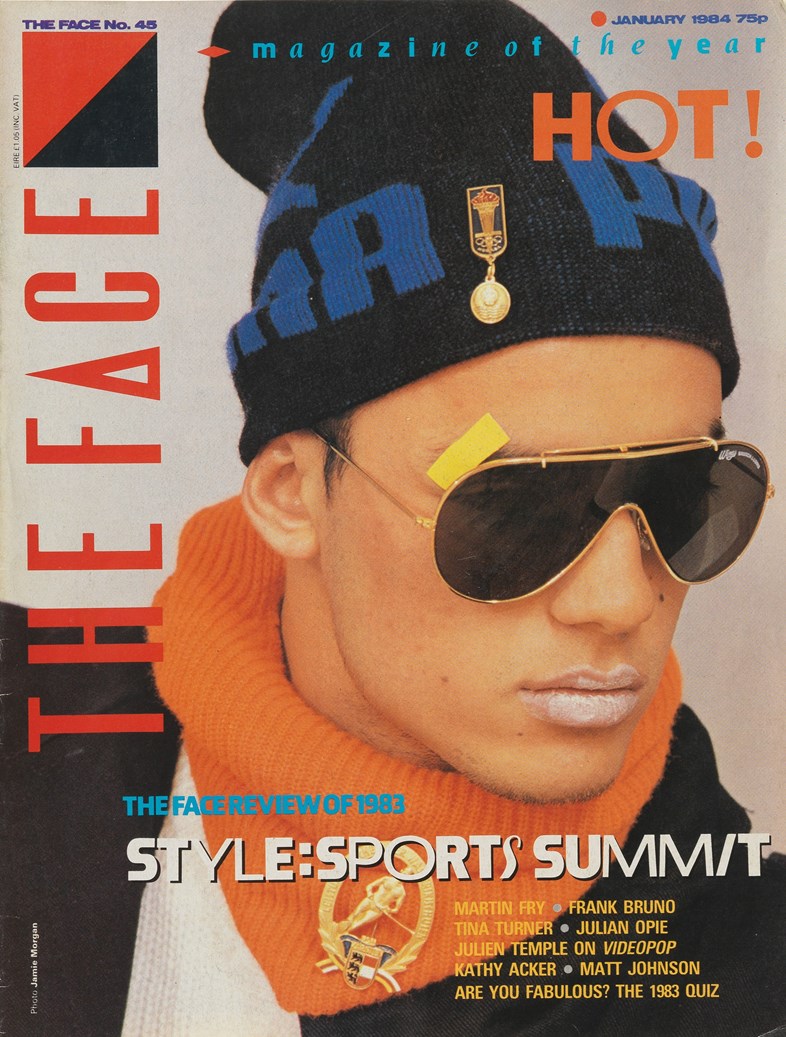
“As a young teenager, getting the new issue of The Face every month was an event. It showed me a world I wanted to be a part of. It schooled me in everything from what to wear, what to listen to, where to go out but, most importantly, what I should care about. The Face was more than a style magazine: it had an opinion and made a stand on important issues. It always felt like a close gang of friends were behind it, having a conversation across its pages. Later, when friends took major roles at The Face and my sister became Fashion Director, I was lucky enough to take part in that conversation as a model and fledgling writer. It always felt like family.” – Ben Cobb, Editor-in-Chief of Another Man
“I started to get hold of The Face when I was about 16. I was into Smash Hits first, then discovered i-D and then The Face. It was hard to get in Scotland – you literally had to wait a month to get the next one – and when I finally got a copy, I’d be nervous to open it and didn’t want to rush it. The magazine made me both excited and confused, and while I didn’t always understand what they were saying, I knew they were talking to me. I was obsessed with this world and couldn’t wait to get out of the suburbs and move to Face-land.” – Alister Mackie, Creative Director of Another Man
“Working with The Face was my a special moment in time for me. Nick Logan gave myself, Ray Petri, and Buffalo the freedom to do whatever we wanted. He would just phone up a week before going to press and say, ‘What have you got for me? How many pages? I’m holding the cover for you, have you got a cover?’ I would always say yes, even if we hadn’t shot the story yet! It was the early days of independent magazine publishing and The Face was the bible to all the young aspiring creatives across the globe. It inspired so many people to find the courage to come to London and create their own world and I’m proud to have been part of it.” – Jamie Morgan, photographer

“I edited the Hype Section of The Face one Christmas around ‘91 when the stylists who usually oversaw the pages were away. One time, I had to set up a leopard print shoot which took place at Turnmills on Clerkenwell Road. When the male model arrived, one of the female models told me her mother would go mad if she was shot with a black model. I removed her from the set without anyone realising what was going on, as I didn’t want the male model to be offended. Back in The Face offices, Ashley Heath [former Editorial Director of the magazine) taught me how to use a computer for the first time – I still wrote it all out in pencil before typing it up! I’d styled a few things for them before, but doing the whole section including writing stuff was a career highlight, at a time when The Face was the centre of our universe.” – Mandi Lennard, Founder of Mandi’s Basement
“The Face is the reason I decided to move to London. It portrayed a creativity without boundaries and a fun, cheeky take on pop culture. I literally used it as a fashion bible, getting to know about designers and photographers, but also stylists and upcoming brands, music and parties. It was the ultimate culture mag. The covers were all pretty amazing but I particularly remember the ones by Mondino, which really reflected the aesthetic of the 90s. Later on, I began researching older issues and discovered a lot of amazing fashion and art from the 80s which I had no clue about at the time.” – Nicola Formichetti, Creative Director of Diesel
“The Face was one of our biggest London discoveries. It instantly connected to our teenage years! And it connected to our own take on fashion and youth culture when we started M’A! It was a complete breath of fresh air too, compared to the ‘made up’, contrived, cocktail-dressing fashion that was around us at the time. We still keep copies by our desk, at our home and everywhere so that we can revisit them and get closer to the ethos of that era!” – Marta Marques and Paulo Almeida, Founders of Marques’Almeida
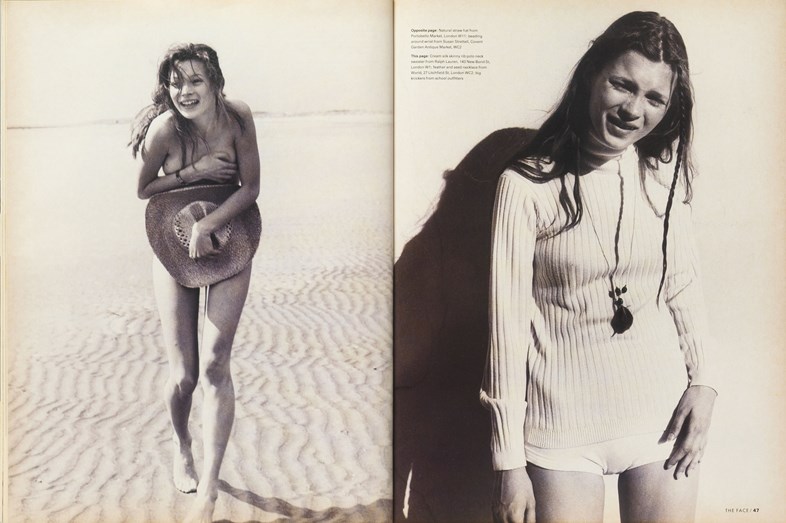
“I remember the first issue of The Face I bought – it was back in December 1996 (the issue was January 1997), and in retrospect was oddly pivotal. It featured that Anna Cockburn/David Sims DIY shoot – titled ‘Blue Peter’ (stories in The Face always had good titles) – which designers have endlessly ripped off, as well as a giant Sims beauty shoot with Guido Linda Cantello. Looking back, at those stark images of oddly beautiful models with their chopped-up hair and intentionally greasy skin, thick eye-make-up or smudged lipstick, it was actually establishing the template for the aesthetic of the latter half of the decade, which would come to define 90s fashion. As a kid, growing up seeing that, I was blown away. For me, that’s what The Face did, as a whole. It delineated the dominant style of the 1990s, absolutely without parallel.” – Alexander Fury, Editor of AnOther Magazine
“You have to remember that in the 80s and 90s, when I bought The Face and stuck the pictures on my bedroom wall with Sellotape and of ever decreasing tiny balls of Blu-Tack, there was no sharing forums for fashion photography. No Pinterest, no Instagram, no Facebook and so on. The only place for a kid like me from Doncaster to see high fashion images and read about designers and hear designers talk was in The Face. I loved the world of clubs and clubbing and to hear about exciting new musical movements like ‘acid jazz’ and all the accompanying fashion looks; the haircuts and make-up and mad bulbous shoes with spoon toes. I was desperate for a smiley tee. The Face propelled me into this world. I felt part of a new dynamic scene that was 300 miles away from Donny. I read everything, every month; every single page. And I nicked it when I didn’t have the money to buy it. I think The Face and, of course, Dazed & Confused and i–D enabled a new breed of stylists and fashion editors, photographers and writers to visualise what they wanted to do and be. It was the best careers advice a fashion kid could wish for.” – Richard Gray, Senior Editor of 10 Magazine & 10 Men
“As a teenager growing up in Dundee in the 1980s, The Face, felt like a lifeline. It’s impossible to describe just how exciting and inspirational this new magazine – which was like NME and Smash Hits’ cooler, edgier, gender-neutral sibling – was for me at the time. It’s hard to believe it today, but back then there was no internet, no smartphones or social media. The Face was my window into the worlds of international club culture, fashion, music, design and ideas. When I moved to London later on, I was still reading it from cover to cover every month. The Face was absolutely of its time, my trusted fashion and style friend.” – Steven Philip, Founder of Rellik Vintage
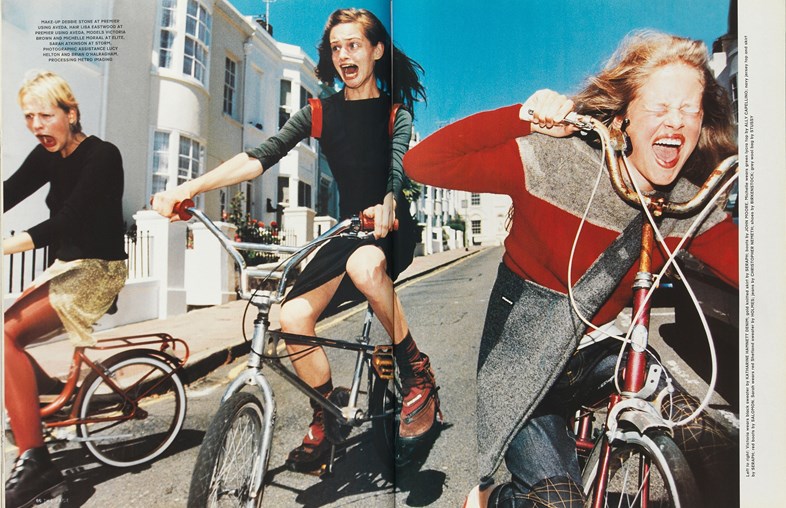
“The issue of The Face that I remember most vividly is that mid-90s one with Leonardo DiCaprio on the cover (I am too young for it to be the ‘3rd Summer of Love’, which I only discovered later...). Leo was the heartthrob of choice for me and all my best friends. I remember revering my copy of the magazine – because it was PROOF that I loved Leo. I left it lying around in my bedroom, amidst walls covered in Athena posters. Then as now, print is about proof. My posters have changed but my love of Leo has not.” – Lucy Kumara Moore, Owner of Claire de Rouen Books
“I picked up my first copy of The Face off the classroom floor of a science lesson in December 1996; Patsy Kensit was on the cover wearing thick eyeliner and a razor-blade necklace. It was transformative: a lifeline, a haven, an alternative world, a secret club. I would take a copy on summer holidays and literally read every single word on every single page, and then reread it all over again. I showed a tailor in Calcutta a spread of the Beastie Boys in 1998 to get shirts cut the same way. Over the years I went further back into the archives, it was a holy grail of image and idolatry, history lesson and reference, from the ‘Killer’ cover to Robert Elms’ ‘Hard Times’ cover essay.” – Ronojoy Dam, Group Creative Director of Dazed Media
“The Face was my bible when I was at secondary school. I felt like it had been created just for me, who revelled in Macaulay Culkin spitting on himself, but you know, like, artistically. Long before I understood the mechanics of a magazine, The Face was my access to a world that felt just out of reach where there were ‘shoots’ and ‘graphic designers’ and ‘people did pills’. I vividly remember reading about how Ibiza was ‘over’, having never been clubbing myself. I also saw a picture of Giles Deacon with a ‘Hoxton fin’ haircut and copied it (which didn’t really translate in Brighton). The Face is responsible for my most heinous adolescent fashion faux pas: a white flatcap/tux jacket/tennis wristband ensemble, which looked fucking terrible. But it holds a very special place in my memory, during those hazy post-adolescent days when the world is full of promise, if only you can somehow make it through sixth form.” – Raven Smith, Freelance Creative Director
The Story of The Face, published by Thames & Hudson, is available to purchase here.
